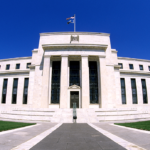Apart from inflation, the somewhat weaker-than-expected US nonfarm payroll report for June has also played a key role in reinforcing peak rate possibility.
The narrative of the peak rate pushed the US yields sharply lower. Yields on ten-year US treasuries fell from 4.09% seen on July 7, the highest since March, to 3.72% on July 18. Similarly, two-year US yields tumbled from 5.12% on July 6 to 4.65% on July 18.
The sharp decline in the yields gave way to an upward correction in the latter part of the week on better-than-expected US weekly jobless claims for July 15 (actual 228k, forecast 240k, prior 237k) and Philadelphia Fed business outlook prices received (July) surging to the highest level since January.
The US Dollar Index, which tumbled to 99.58 on the possibility of the Federal Reserve stopping hiking rates after its July hike, recovered to reclaim the 101 mark as yields moved higher. The US Dollar Index closed with a weekly gain of around 1% at 101.08.
Two-year yields at 4.846% were up by around 1.75% on the week, while ten-year yields closed the week with a gain of around 1 bps at 3.837%.
Rising yields and a rebound in the US Dollar Index pushed the metal lower Friday. Gold closed with a loss of 0.52% at $1961.96 Friday.Macroeconomic data out of Europe have been hardly encouraging. UK’s inflation fell to the lowest level in the last fifteen months as the annual consumer price growth cooled significantly from 8.70% in May to 7.90% in June.
Core inflation dropped for the first time in five months to 6.90% vs the forecast of 7.10%. Headline inflation was recorded at 11.10 in June, the highest reading in at least four decades.
UK inflation data falling sharply lower has given rise to a possibility that the Bank of England may not find it urgent to aggressively raise rates to 6.25% from the current rate of 5%.
Meanwhile, the Bank of Japan reaffirmed its loose monetary stance. Thus, the US Dollar Index may stabilize in the near term, which may cap gains in gold prices.
Next week, investors will focus on global manufacturing and services PMIs, FOMC monetary policy decisions and US GDP (2Q A), and PCE core deflator, the Fed Chair’s preferred gauge of inflation.
Total known ETF holdings of gold are at the lowest level since March 10, so fundamentals are not very supportive. Prices settling higher on the week despite higher Dollar Index and higher yields is somewhat counter-intuitive.
With no immediate banking/financial concerns, the safe haven appeal of the metal has been dented, thus, gold has to rely on yields and dollars for its upward traction.
Support is seen at $1950/$1935, while resistance is at $1988/&2000.
(The author is Associate VP, Fundamental Currencies and Commodities, Sharekhan by BNP Paribas)
(Disclaimer: Recommendations, suggestions, views, and opinions given by experts are their own. These do not represent the views of the Economic Times)








